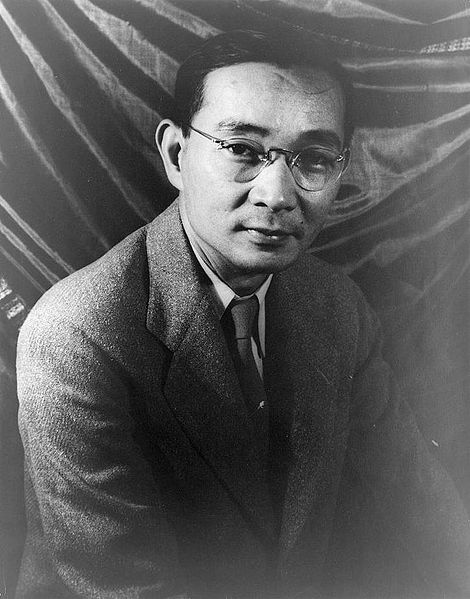Gwoyeu Romatzyh, abbreviated GR, is a system for writing Standard Chinese in the Latin alphabet. It was conceived by Yuen Ren Chao, who led a group of linguists to develop the system from 1925 to 1926. From 1942 to 2000, a small number of reference works published in Hong Kong and overseas made use of the system, and Chao would use it throughout his later linguistics work, including in his most influential publications. However, Gwoyeu Romatzyh never achieved widespread use among the Chinese public. In places where it had been used, it was eventually replaced—largely by Hanyu Pinyin, which became the international standard romanization during the second half of the 20th century. Pinyin itself made use of principles originally introduced by Gwoyeu Romatzyh, whose influence is often reflected in the design of later systems.
Lin Yutang, who first proposed tonal spelling
Gwoyeu Romatzyh in use on a park sign in Taipei – Taytzyy (太子; Tàizǐ)
Yuen Ren Chao as a young man (c. 1916)
Yuen Ren Chao, also known as Zhao Yuanren, was a Chinese-American linguist, educator, scholar, poet, and composer, who contributed to the modern study of Chinese phonology and grammar. Chao was born and raised in China, then attended university in the United States, where he earned degrees from Cornell University and Harvard University. A naturally gifted polyglot and linguist, his Mandarin Primer was one of the most widely used Mandarin Chinese textbooks in the 20th century. He invented the Gwoyeu Romatzyh romanization scheme, which, unlike pinyin and other romanization systems, transcribes Mandarin Chinese pronunciation without diacritics or numbers to indicate tones.
Chao as a young man c. 1916
Yuen Ren Chao, seated left, and his eldest daughter Iris Rulan Chao Pian. Yuen Ren Chao was married to Buwei Yang Chao (1889–1981), Chinese-American physician and author who introduced the terms "pot sticker" and "stir fry" in her first book, edited by Chao




